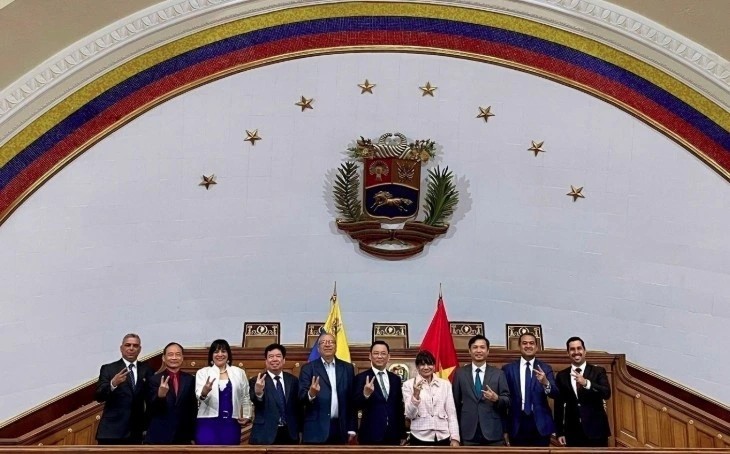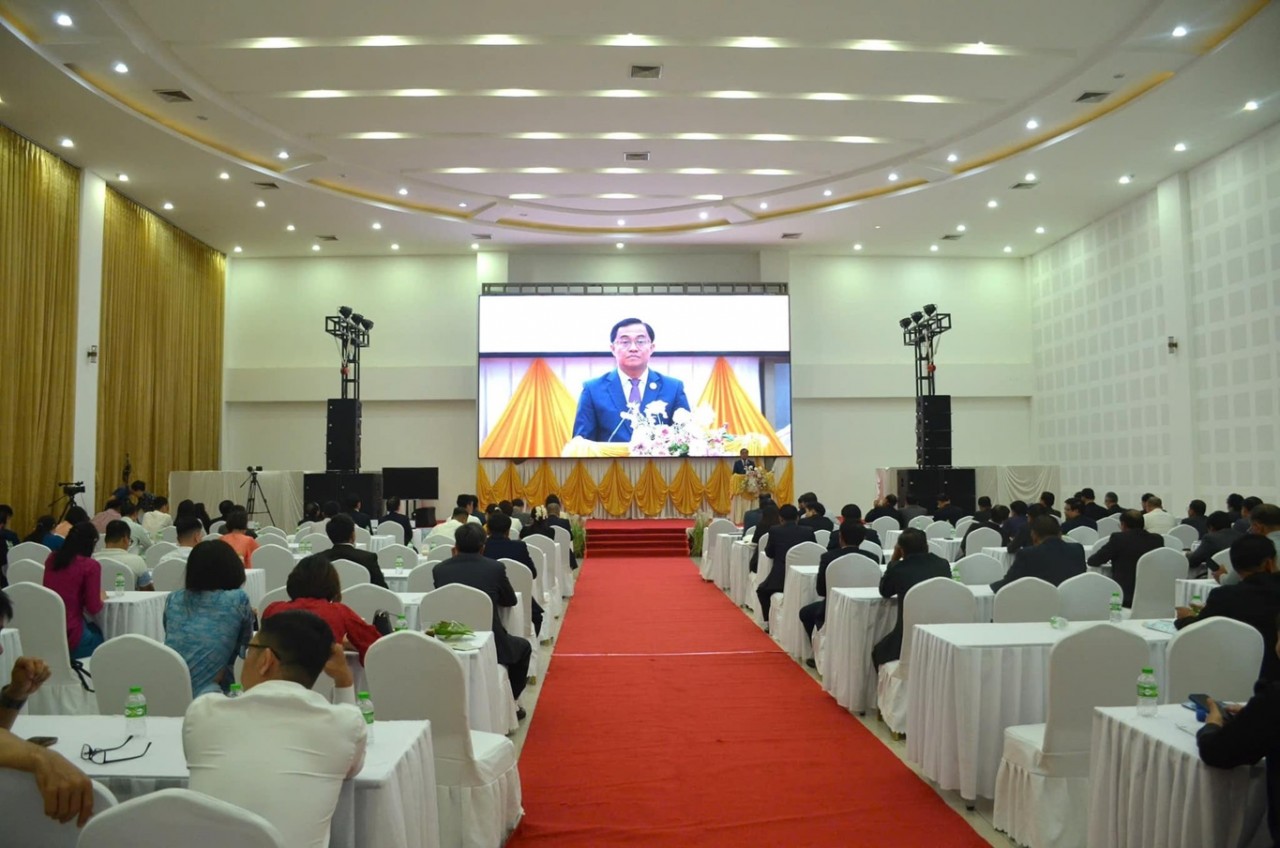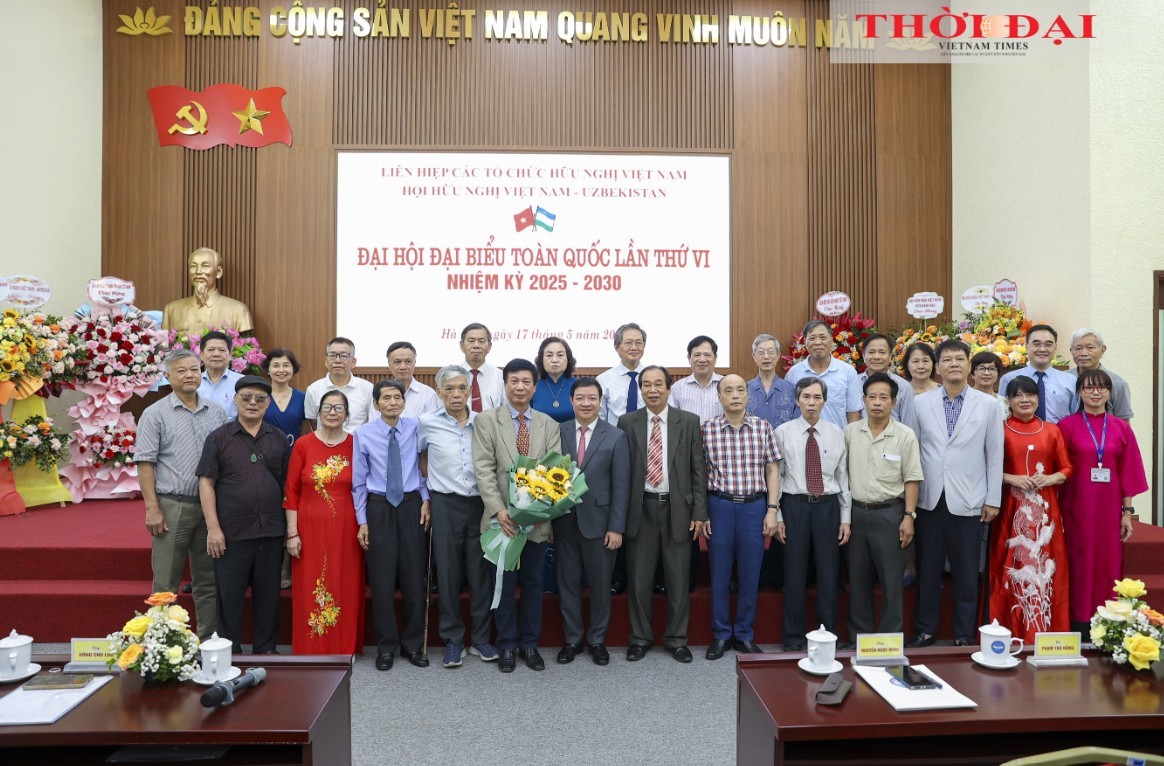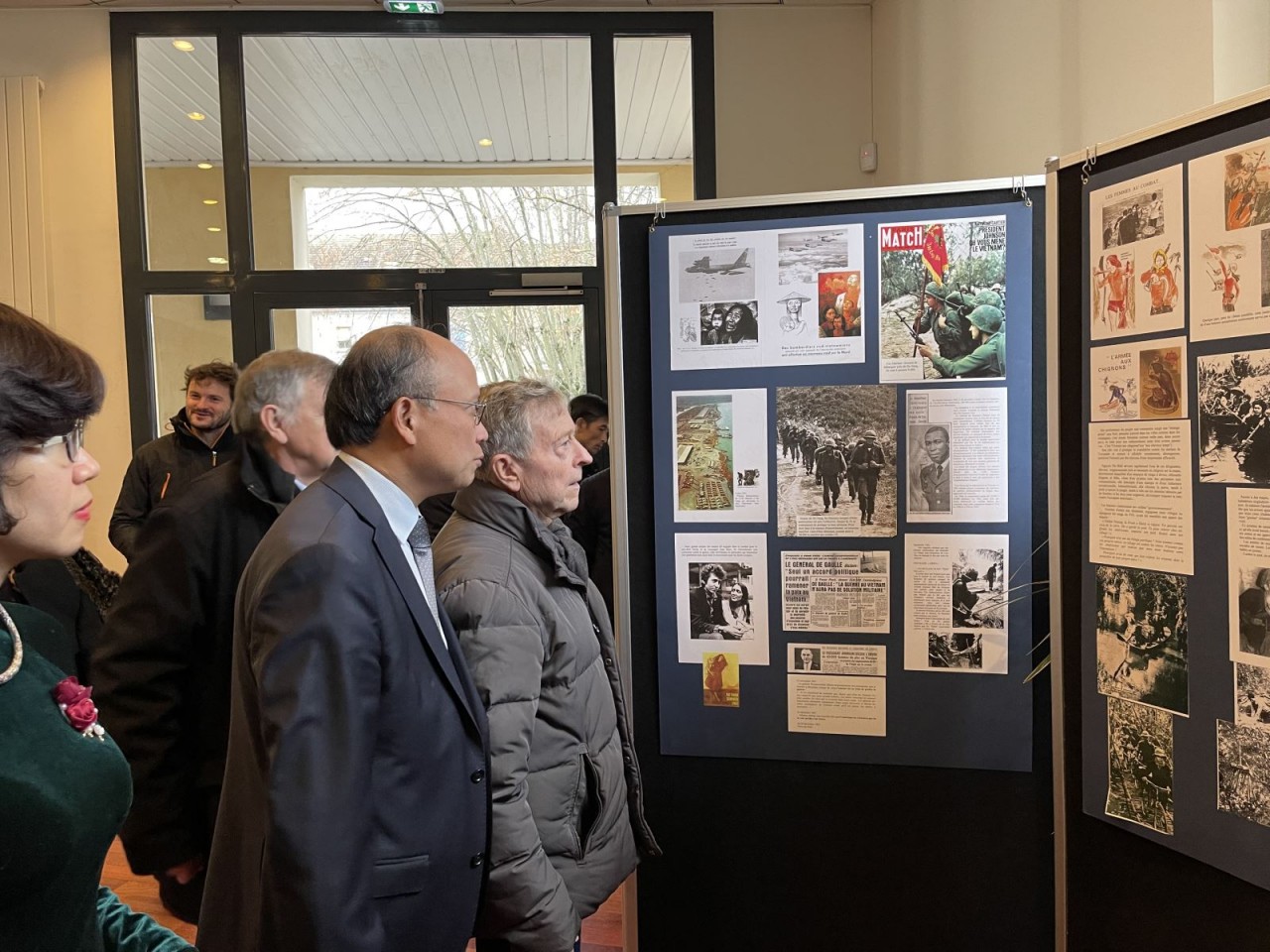Special Diplomatic Front’s Stature - Paris Conference on Vietnam
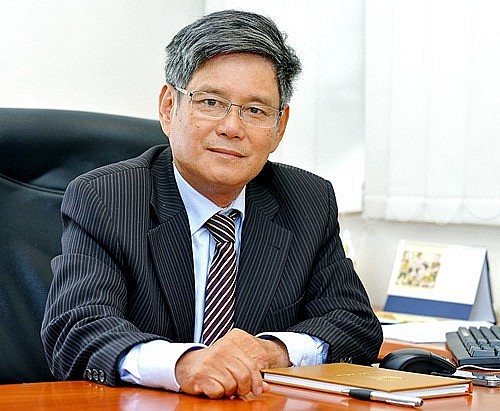 |
| Dr. Nguyen Ba Son, former President of the Vietnam Society of International Law. |
It can be said that the Paris negotiations, lasted in nearly five years, reflected the art of people-to-people diplomacy employed by Vietnam, which was unique in the world’s diplomacy.
The selection of Paris, located in Western Europe, instead of two cities in Eastern Europe and Southeast Asia, where Vietnam had political and geographical advantages, as the venue for the Vietnam-US talks showed that Vietnam had no illusions about diplomatic negotiations.
The Vietnamese Party Central Committee advocated simultaneous struggles on all three political-military-diplomatic fronts, with political and military struggles in South Vietnam as the key factors creating a premise for diplomatic successes in the international arena.
With the selection of Paris as the venue for the talks, President Ho Chi Minh and the Party determined to take people-to-people diplomacy to the frontline of the diplomatic struggle in the new revolutionary period. As the world’s important political and cultural centre located in the heart of Europe, Paris was expected to offset shortcomings of Vietnamese diplomacy at that time.
From Paris where the headquarters of leading international news agencies were located, information about the war, especially diplomatic initiatives of Vietnam, was spread worldwide in the fastest, most vivid and most accurate fashion.
In Paris, political circles, mass organizations and peace-loving people from France and other countries, including the US, could easily approach “Viet Cong” – representatives of the Vietnamese diplomatic sector. From there, at the invitation of progressive, peace and justice-loving mass organizations in Western European countries, members of the two delegations - the Democratic Republic of Vietnam and the Provisional Government of the Republic of South Vietnam had favorable conditions to mobilize the support from people and political circles of the countries for the struggle of the Vietnamese people. France, which was home to the largest number of overseas Vietnamese communities in the world at that time, would provide indispensable support in many aspects for the materialization of Vietnam's diplomatic strategy.
Vietnam engaged in the Paris negotiations with the clear awareness that it was the force correlation on the battlefield, not on the negotiating table, that decided the war. However, in the unequal war, apart from the resilience of the nation, the support from peace-loving forces worldwide, especially American people and allies of the US, was of great significance. The nine-year resistance war gave lessons on the role of people’s front and anti-war movements right in Paris.
The “fight and talk” strategy was launched and Vietnam forced its opponent, who earlier intended to use diplomatic negotiations to appease the anti-war movements, to take part in the "playground" of Vietnam and observe "rules" that were not set by them. Diplomatic struggles over the participants (in the two- or four-party conferences), and the shape of the negotiating table (rectangle, square and then round table), which lasted for many months, remained memorable diplomatic lessons.
The Vietnamese diplomats won the love of the public and had advantages in approaching people from various social strata in Western countries (politicians, scholars, writers, journalists and famous artists, among others), who had influence on public opinions.
People-to-people diplomacy in this period not only targeted workers, farmers, and students, who played an active role in mass struggles but also included the elites in Western society.
Since its establishment and participation in the four-party Paris Conference, the Provisional Revolutionary Government of the Republic of South Vietnam had worked to achieve higher diplomatic goals. Since June 1969, representative offices of the National Front for the Liberation of South Vietnam in socialist countries were renamed embassies, and the Front’s delegation to the Paris Conference became one of the Provisional Revolutionary Government of the Republic of South Vietnam led by Foreign Minister Nguyen Thi Binh. Along with socialist countries, the Provisional Revolutionary Government of the Republic of South Vietnam also opened embassies in the capitals of other countries like Egypt and Algeria.
People-to-people diplomacy took the slogan of “the Provisional Revolutionary Government of the Republic of South Vietnam - the only true and legitimate representative of the South Vietnamese people”. Right after its establishment, the Provisional Revolutionary Government of the Republic of South Vietnam was recognized by 23 countries, of which 21 set up diplomatic ties.
As an embassy had not yet been established in Paris, the Provisional Revolutionary Government of the Republic of South Vietnam proposed opening an information office there, which was approved by the French Government. From June 1969 to early 1976, up to 90 countries around the world recognized and established diplomatic ties with the Provisional Revolutionary Government of the Republic of South Vietnam.
Along with mobilizing countries for recognition, the Provisional Revolutionary Government of the Republic of South Vietnam conducted a diplomatic struggle at intergovernmental international organizations, asking for official membership, in competition with the Republic of Vietnam, at multilateral diplomatic forums.
A valuable lesson and important diplomatic victory lied with the struggle for the right to represent the South Vietnamese people in the Non-Aligned Movement (NAM) - a specific form of the intergovernmental international organization of developing countries. Through difficult diplomatic campaigns (due to the intervention of the US and the Republic of Vietnam), especially by utilising the support from progressive countries, the Provisional Revolutionary Government of the Republic of South Vietnam got the observer status of the NAM at the Foreign Ministers' Meeting in the Georgetown (Guyana) in 1972, and then became an official member of the NAM at the 4th Summit in Alger (Algeria) in 1973.
The signing of the Paris Agreement and the NAM membership created a solid international legal and political basis and an optimal opportunity for Vietnam to set the target of joining other intergovernmental international organizations. Following suggestions made by the UN Secretary-General at the International Conference on Vietnam, the Provisional Revolutionary Government of the Republic of South Vietnam called for the support from member states to obtain the observer status at the UN.
Vietnam’s most intense diplomatic struggle before April 30, 1975 was to seek for the participation in the Diplomatic Conference on International Humanitarian Law in early 1975. The function looked into and approved two Protocols supplementing the four Geneva Conventions for the Protection of War Victims. These two Protocols enhanced the protection of victims of international armed conflicts (Protocol I) and non-international armed conflicts (Protocol II). With the support from socialist and developing countries, the Provisional Revolutionary Government of the Republic of South Vietnam lacked only two votes to be formally invited to the important diplomatic conference convened by the UN.
Starting and conducting a diplomatic struggle at the Paris Conference on Vietnam was an important victory, but the most important thing was how to end a diplomatic campaign and maximize the diplomatic victory.
After the signing of the four-party Paris Agreement on Ending the War and Restoring Peace, an international conference on Vietnam was convened and an act was inked on this occasion, with the participation of the US, France, Hungary, Indonesia, Poland, the UK, the Soviet Union, Canada and China, together with the three sides of Vietnam, and in the presence of the UN Secretary General.
This was also a great success of people-to-people diplomacy. The Provisional Revolutionary Government of the Republic of South Vietnam won the equal right to sign an important international legal document with countries of different political regimes worldwide, including the five permanent members of the UN Security Council.
The act aimed recognize the signed agreements, ensure an end to the war, maintain peace in Vietnam, respect the fundamental national rights of the Vietnamese people as well as the right of the South Vietnamese people to self-determination, and contribute to peace and ensuring peace in Indochina./.
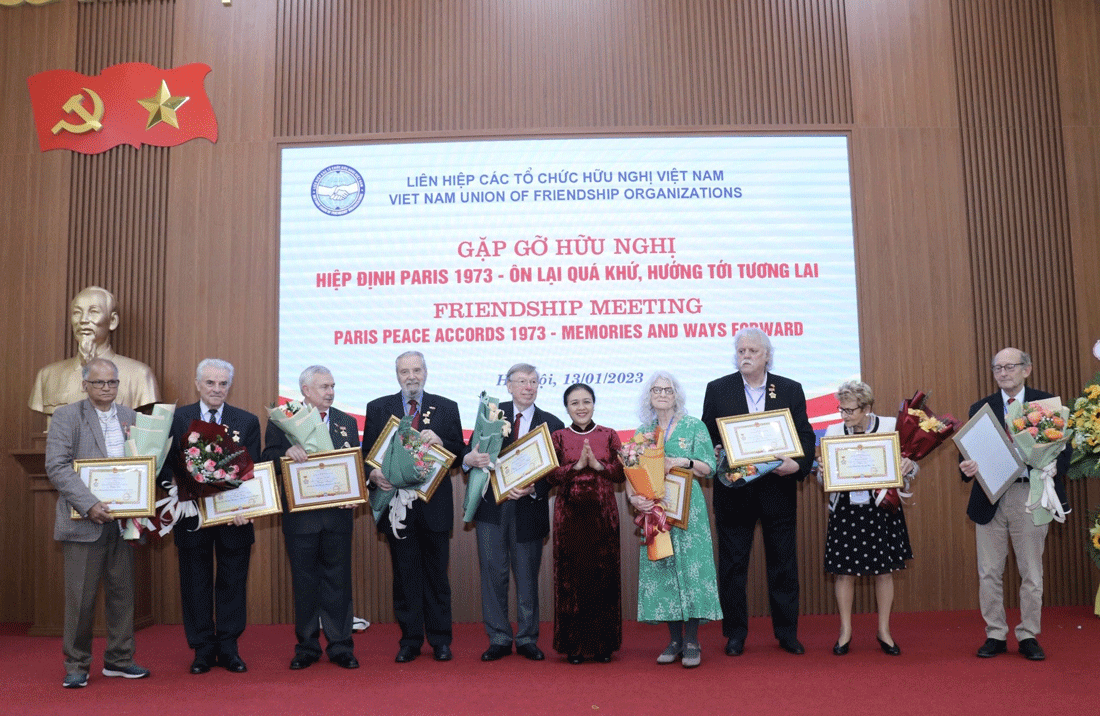 | "Vietnam Always Engraves International Solidarity" Phan Anh Son, Vice President - General Secretary of the Viet Nam Union of Friendship Organizations (VUFO) spoke at the friendship meeting, entitled "Paris Peace ... |
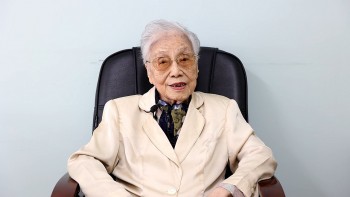 | Former VP Nguyen Thi Binh Thanks Historical Witnesses of the Paris Peace Accord On the 50th anniversary of the signing of the Paris Peace Accord on ending the war and restoring peace in Vietnam (January 27, 1973 - ... |
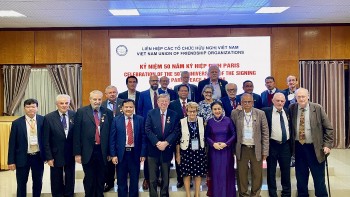 | 50th Anniversary of the Paris Peace Accord Celebration - A Proof of Solidarity The President of the Viet Nam Union of Friendship Organizations (VUFO) made the statement at the welcome party for international delegates attending the 50th anniversary ... |
In topics
 Friendship
Friendship
Choisy-le-Roi City Shares Common Values on Peace, Solidarity with Vietnam
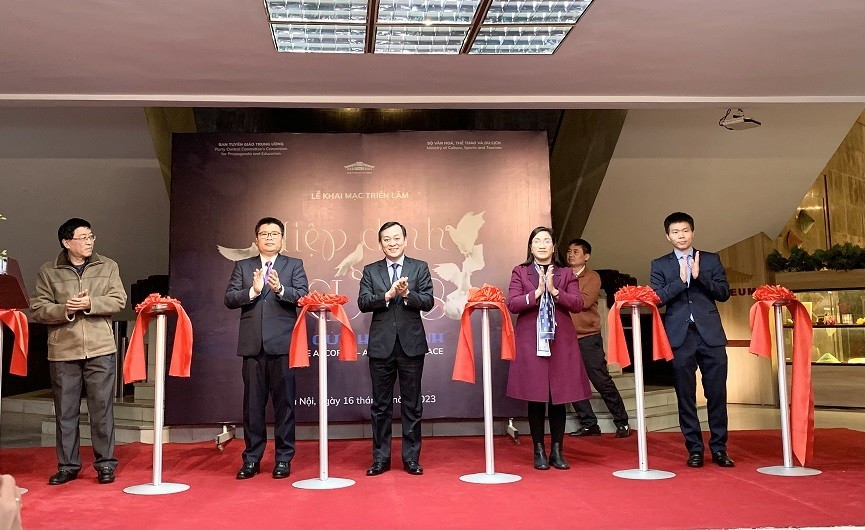 Viet's Home
Viet's Home
'Paris Peace Accord - Gateway for Peace' Exhibition Opens in Hanoi
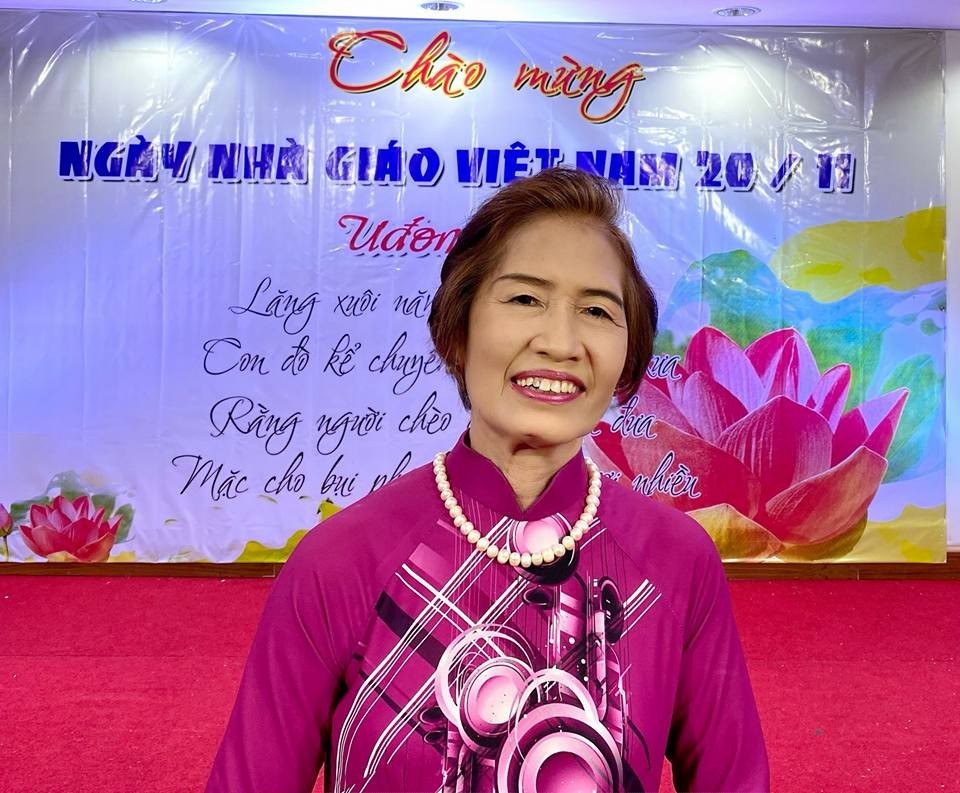 Overseas Vietnamese
Overseas Vietnamese
Overseas Vietnamese: Memories of Paris Peace Accords Live Forever
Recommended
 Focus
Focus
Vietnam Leaves Imprints on the World Peacekeeping Map
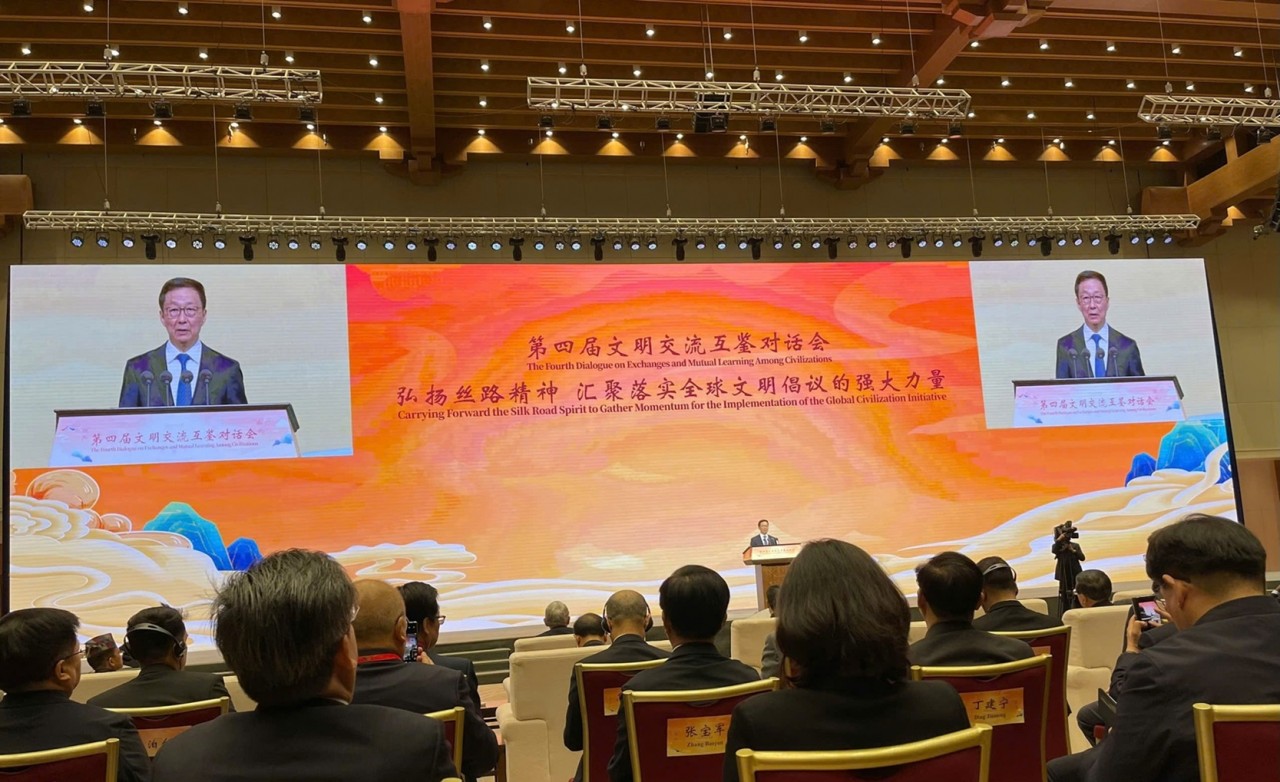 Friendship
Friendship
VUFO Attends Fourth Dialogue on Exchange and Mutual Learning among Civilizations
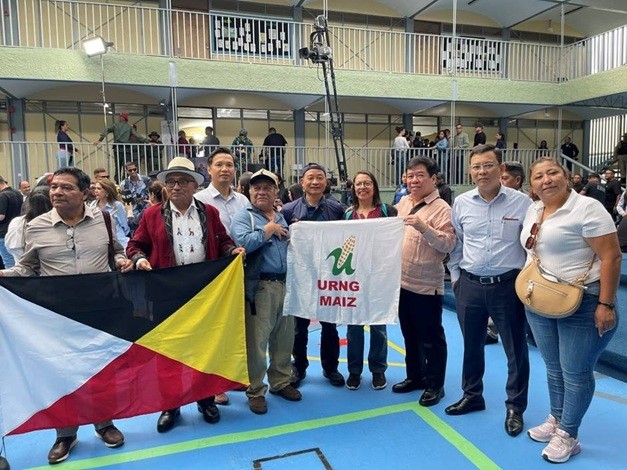 Focus
Focus
Strengthen Solidarity and Friendship Between Vietnam and Venezuela
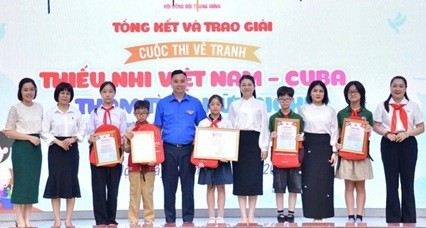 Focus
Focus
"Vietnamese - Cuban Children, Deep Friendship" Painting Contest Announces Winners
Popular article
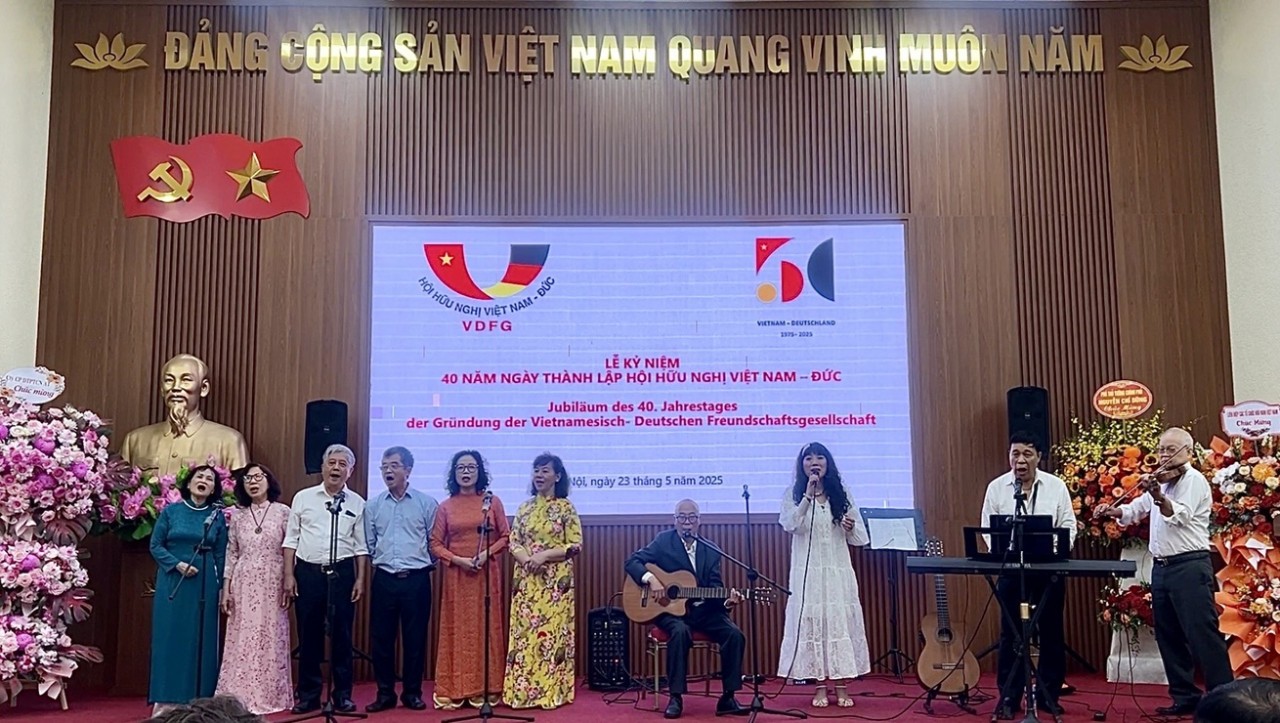 Focus
Focus
Solid Bridge for People-to-people Relations between Vietnam and Germany
 Focus
Focus
35 Years of FES in Vietnam: Fostering Dialogue, Advancing Equity
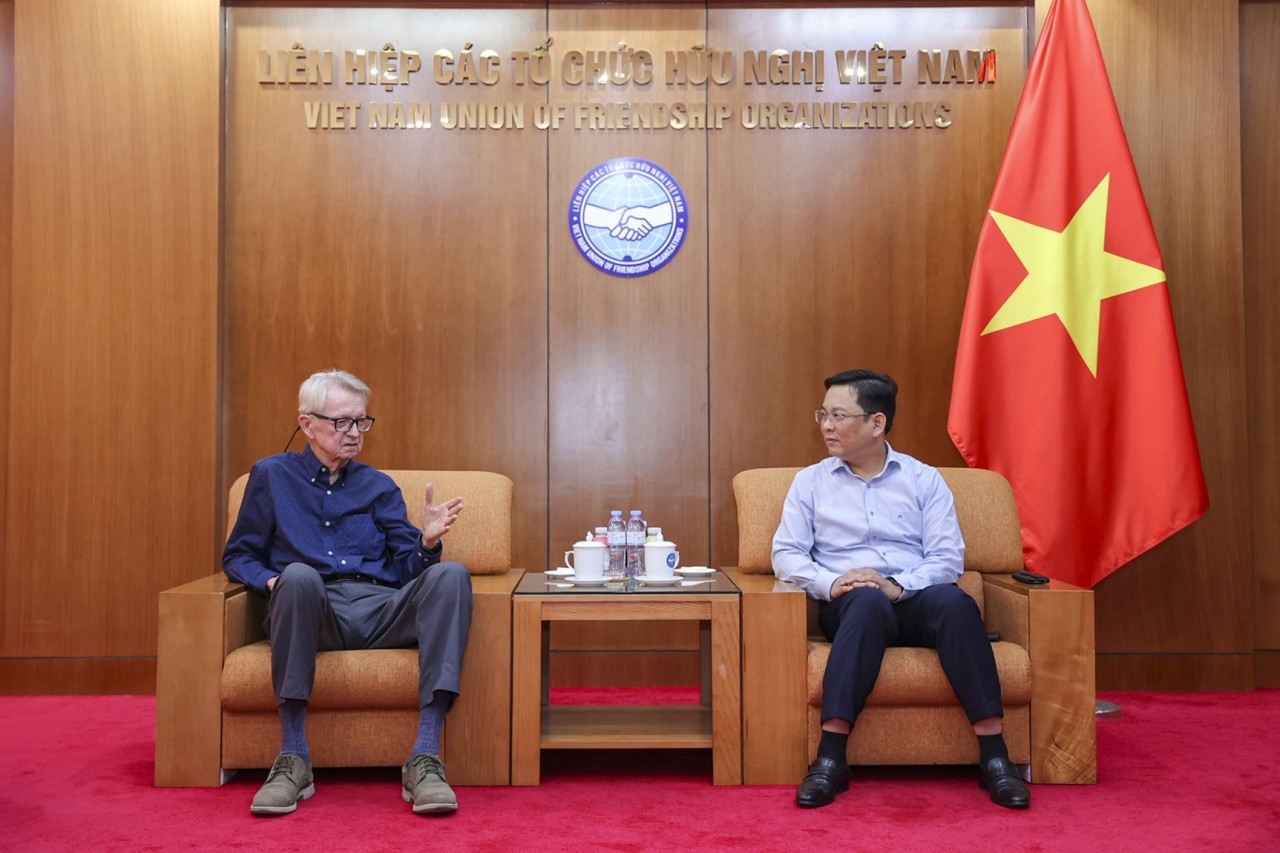 Friendship
Friendship
VUFO Appreciates Contributions of American Veterans in Overcoming Consequences of War
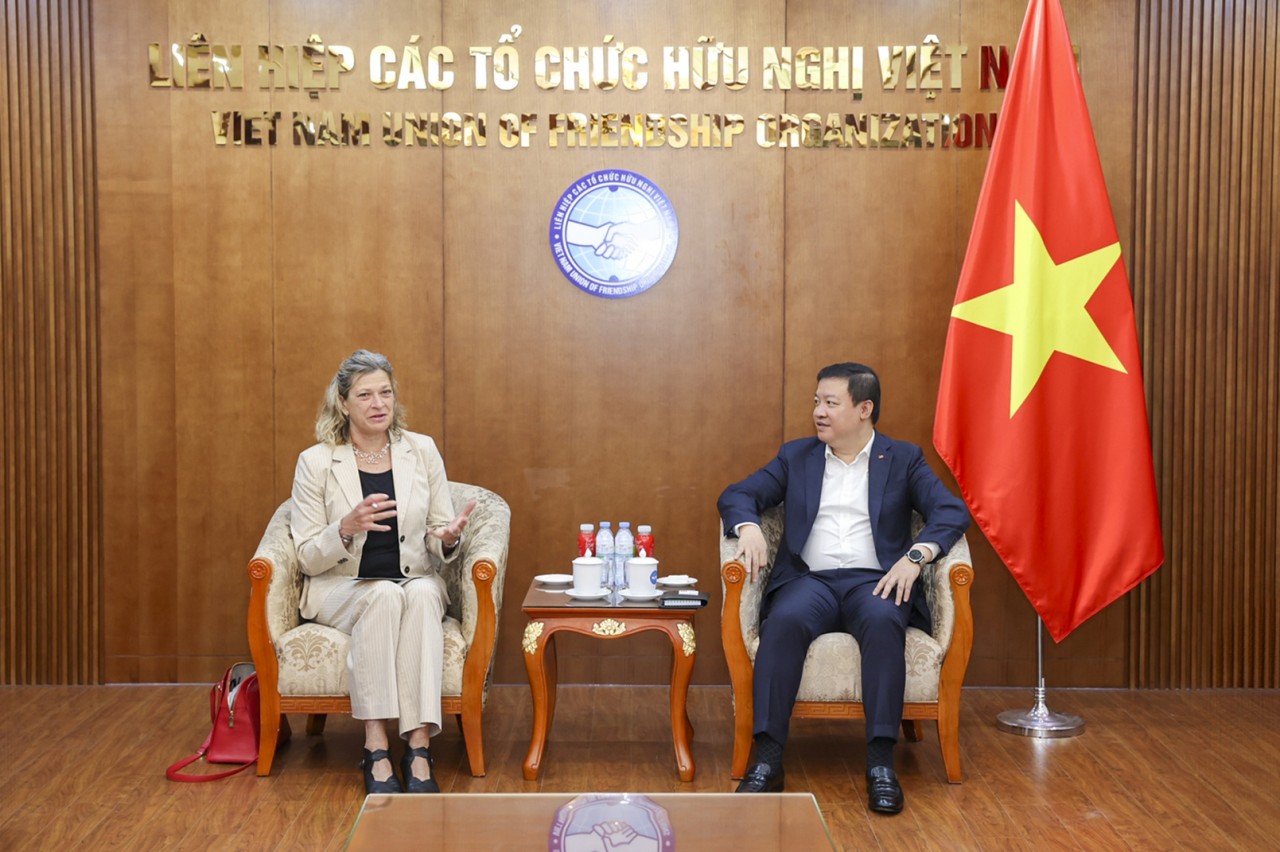 Focus
Focus




